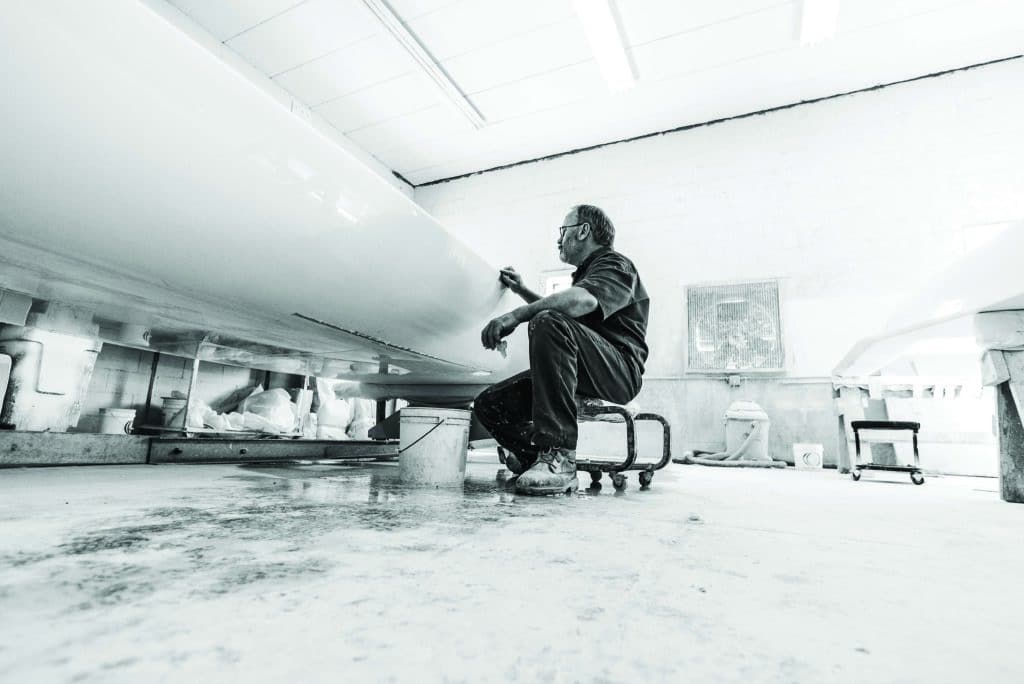
Richard Swaney leans his motorcycle toward the weathered corrugated-metal building on Zenda Road, the one with the big, curvy, faded Melges Boat Works logo on its side. It’s the very same building he rolled up to on his bike in September of 1980, while rambling around in search of a job. He knew nothing of fiberglass or sailboats at the time, but today, he’s behind every single boat that’s pushed out the door and into daylight. And when the Wisconsin sun hits that hull, you better believe it shines to the moon.
Swaney, 57, is one of three Melges employees with more than three decades at the company, and it’s in his dust-caked corner of the factory that the magic happens. Before a new boat gets its hardware mounted, it’s Swaney who works methodically throughout the boat, inside and out, fairing, sanding and polishing until it meets the standards of his impeccable, bespectacled eyes.
“I can paint good, I can sand really good, and I can make it shine,” says Swaney. “Those are the most important things in my job.”
His co-workers describe him as a quiet guy with a strong work ethic. There’s a rhythm to how he works with each boat, whether it be a scow, a sportboat, or anything else that lands in his space. He has a process he’s perfected over years of laminating, building molds, and doing every possible job at the shop. But finishing is most satisfying. Back when Buddy Melges was in charge, he says, Melges would never let them use power tools. “It was all handwork,” says Swaney. “That got me good at using a sanding block.”
On this day in June, he has a bare E Scow before him as he rhythmically slides sandpaper back and forth in small strokes across the rail. The radio (he alternates between country and rock) is barely audible over whirring saws, compressors and drills.
“I get it to the point where it looks finished, but it’s really not,” he says. “It takes me five days to block the entire boat.”
This year he changed his technique. He used to block the hull with 220, 400, 600 and then 800, but he felt he was always taking off the gelcoat. Now he inks the boat and takes his time with the 400. “It takes me a couple of days, and then I’ll scribble on it with pencil and go at it with the DA (dual-action sander) with 800-grit.”
Before he hits it with wax, he buffs twice with coarse, twice with medium, and once with Finesse-it. All told, this E will have 120 to 130 of Swaney’s elbow-hours in it before it gets fitted with hardware.
“My part is making [the boats] look good,” he says. “Buddy was good at making them fast and getting them out the door, but Harry (Melges’ son) is more critical about making them fast and perfect, so that’s what we do — make Harry happy.”
At the end of the workday, Swaney cleans up, clocks out, and mounts his motorcycle, handlebars pointed toward his home in nearby Walworth. While sanding away “in the zone,” he’s been thinking about finishing the oil change on his son’s Harley. He’ll be back tomorrow, no doubt, and for at least another 10 years, he says, because “they’ve always been good to me, and this place feels like home.”
There’s that, and there are more boats that need his gifted hands.









